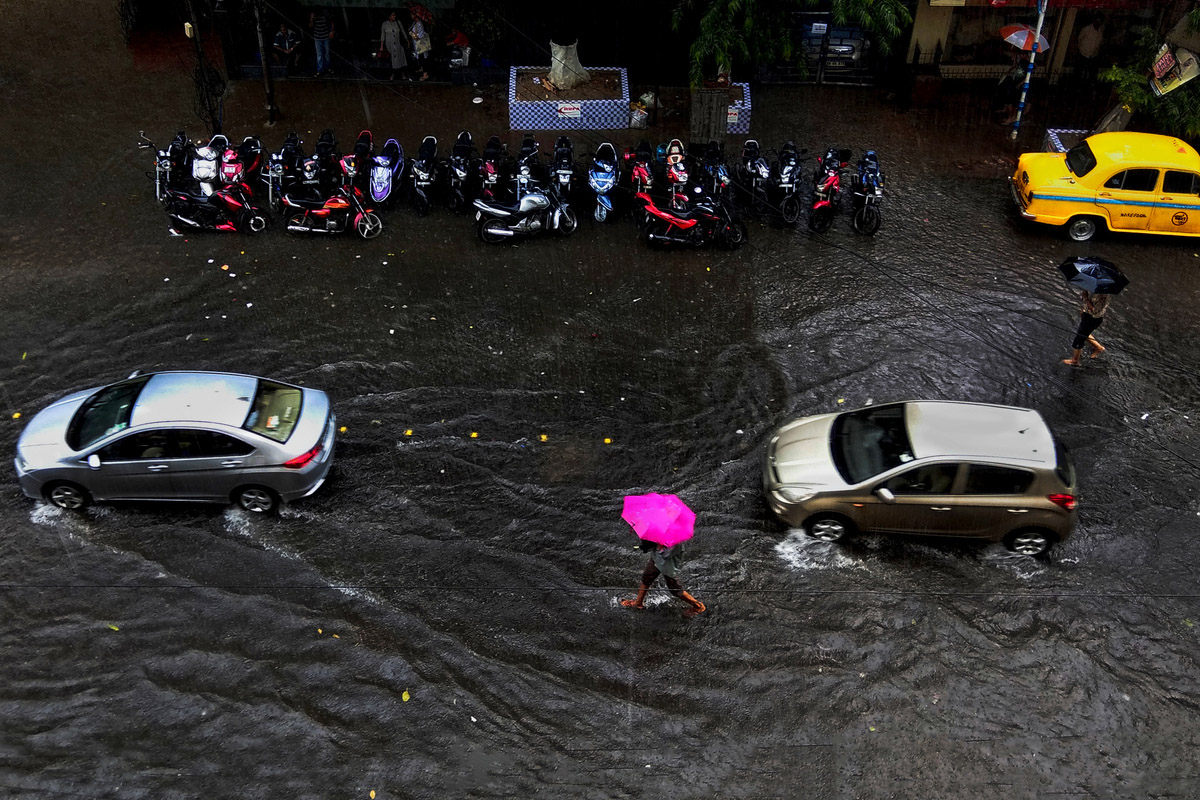Kolkata and different parts of Bengal had a foretaste of what to expect in the weeks ahead when the city was thrown out of joint by overnight rain, as torrential as it was almost incessant.
The extensive waterlogging worsened the predicament of the people, their patience sorely tried for more than a month by the suspension of public transport, notably buses, the Metro and the local trains that link the city to the peripheral regions.
Advertisement
Even vehicular traffic on the roads was brought to a halt by the swirling and filthy water.
The flooding of low-lying areas and through fares have over time become part of the city’s furniture; more to the point must be the fact that the underground sewerage network, believed to have been laid in the 19th century, can scarcely bear the pressure of the city’s development of under-development for much longer.
The waterlogging from South to North Kolkata via the arterial stretch of Chittaranjan Avenue is testament to negligent nonchalance.
The situation was worsened by the high tide in the Hooghly, once again an annual phenomenon.
In the net, the Jawaharlal Nehru National Urban Renewal Mission has regretfully been reduced to urban regression.
The outlook is bleak indeed and fears of imminent floods in South Bengal are not wholly unfounded with water levels increasing in no fewer than six rivers, notably Ajoy in Birbhum, Darakeswar, Brahmani, Shilabati, Subarnarekha and Kangsabati. This is not to forget the collapse of embankments.
Minister Firhad Hakim, who helms the Kolkata Municipal Corporation’s Board of Administrators, has attributed the annual urban scourge to what he calls “unfinished drainage projects”.
His prognosis has served to underlined the collective failure. It devolves on the municipal authorities, therefore, to answer the query of the people ~ resonant in the echo chambers of the KMC headquaters on SN Banerjee Road ~ as to why drainage projects are made to languish in an “unfinished” state.
Mr Hakim’s ultimatum to the agencies concerned to “complete all work by September” ~ failing which their contracts will be terminated ~ comes terribly late in the day. While the elections, the lockdown and the preoccupation with matters political may explain some of the tardiness, the admonition ought to have been issued weeks, if not months ago.
The underground drainage, especially in the vulnerable low-lying areas of Kolkata, ought to have been improved during the dry seasons of winter and summer.
The rains will continue for at least another three months. It has been officially acknowledged that the volume of rainfall surpassed the capacity to drain out water. The city’s underground drainage network is designed to prevent waterlogging only if it rains up to 6 mm an hour.
